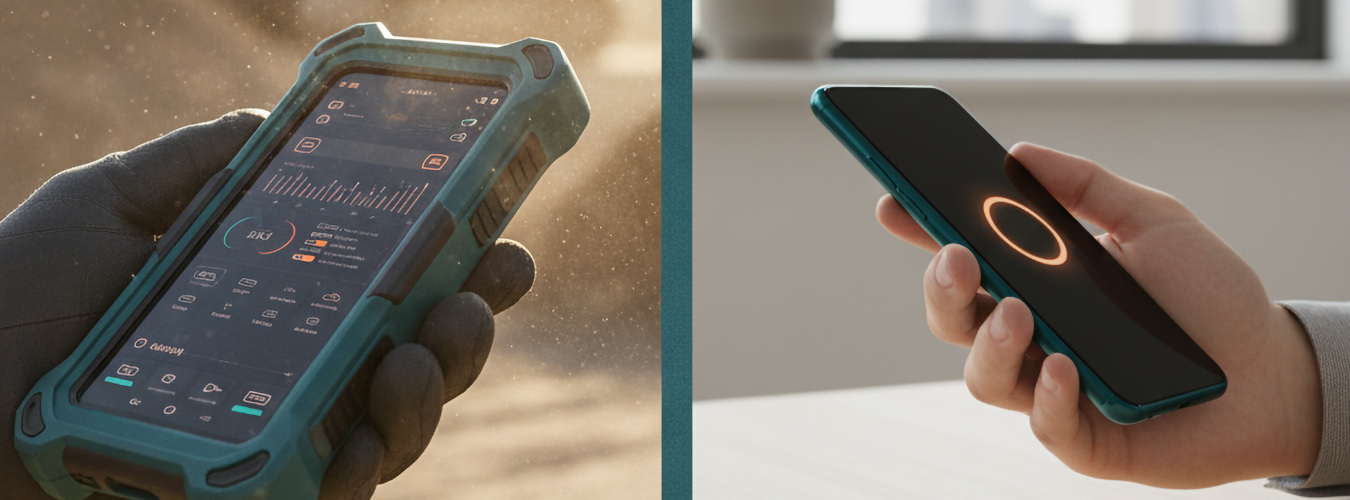
When selecting mobile devices for your organization’s workforce—whether they’re warehouse staff, field service techs, or retail associates—the stakes are higher than ever. It’s no longer just about price or form factor. The right device can mean uninterrupted productivity, long-term cost savings, and fewer help desk tickets. The wrong device can drain IT resources, frustrate employees, and inflate your total cost of ownership (TCO).
One of the first—and most impactful—decisions in the strategic sourcing process is whether to deploy rugged or consumer-grade mobile devices.
This post will walk you through a framework to compare these two categories across the dimensions that matter most: durability, cost, operational environment, lifecycle value, and scalability.
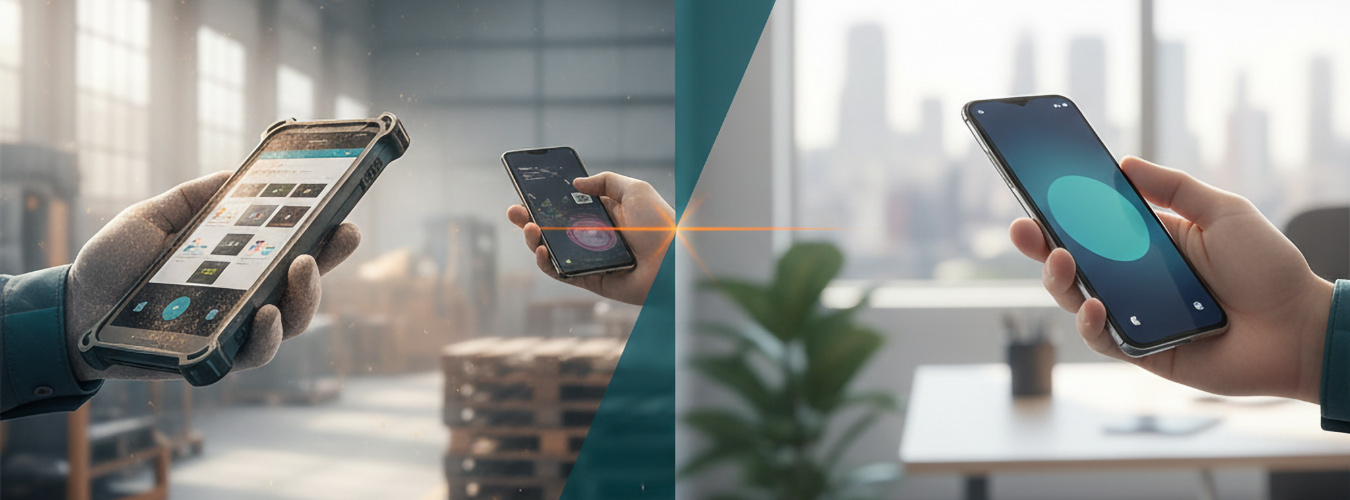
Rugged vs. Consumer devices: understanding the difference
Before we compare them, let’s define the two categories of mobile devices:
- Consumer mobile devices are smartphones or tablets built for personal use. Think iPhones, Galaxy Tabs, or standard Android phones. They’re sleek, fast, and easy to use—but not designed for harsh or demanding work environments.
- Rugged mobile devices, on the other hand, are engineered specifically for enterprise environments. These devices (e.g., Zebra, Honeywell, Panasonic Toughbook) are reinforced for drops, spills, dust, vibration, and extreme temperatures.
The difference isn’t just in design. It also relates to their purpose. Rugged devices are purpose-built for frontline tasks, while consumer devices are optimized for everyday personal use.
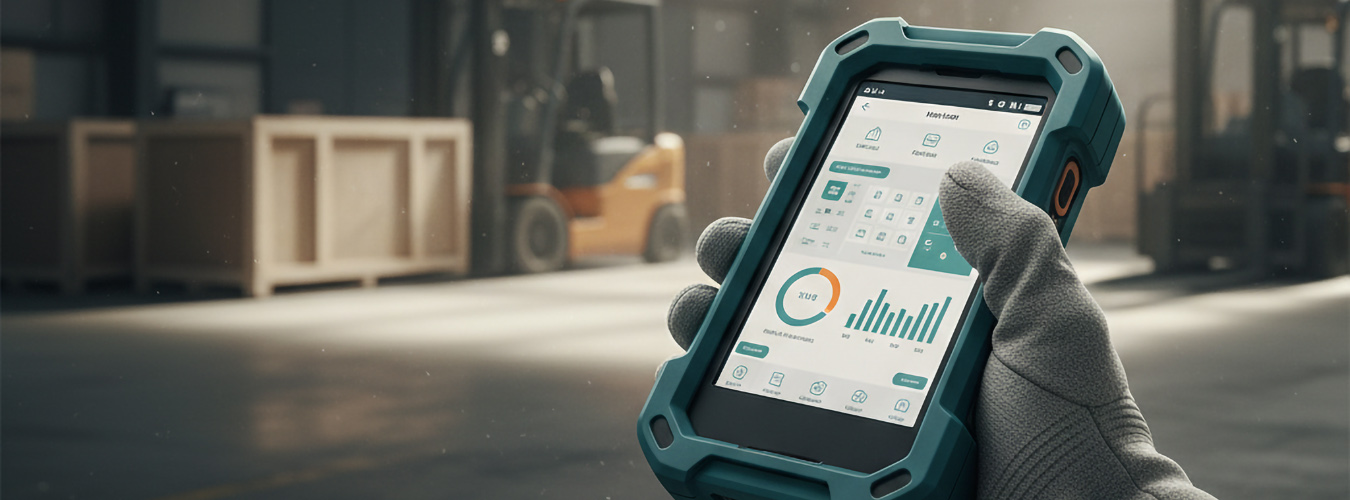
Rugged devices 101: features and use cases
Rugged mobile devices are engineered specifically for challenging work environments. Unlike consumer-grade smartphones, they’re built with industrial use in mind—from the materials used to the hardware lifecycle support they offer.
Key features of rugged devices include:
- Reinforced build: Often encased in hard plastic or rubber with internal shock absorption to survive repeated drops.
- MIL-STD-810 certified: Tested for resistance to vibration, shock, humidity, and extreme temperatures.
- Ingress protection (IP65/IP67 and above): Designed to resist water jets, dust, and dirt—ideal for field use.
- Hot-swappable batteries: Enables uninterrupted use during long shifts or field operations.
- Built-in enterprise tools: Many models include barcode scanners, programmable buttons, and glove-compatible touchscreens.
Because of this, rugged devices tend to be an ideal fit for industries like:
- Transportation and logistics
- Field services and utilities
- Manufacturing and warehousing
- Public safety and emergency services
Rugged devices offer long-term value, lower lifecycle costs, and reliability in conditions where failure simply isn’t an option.
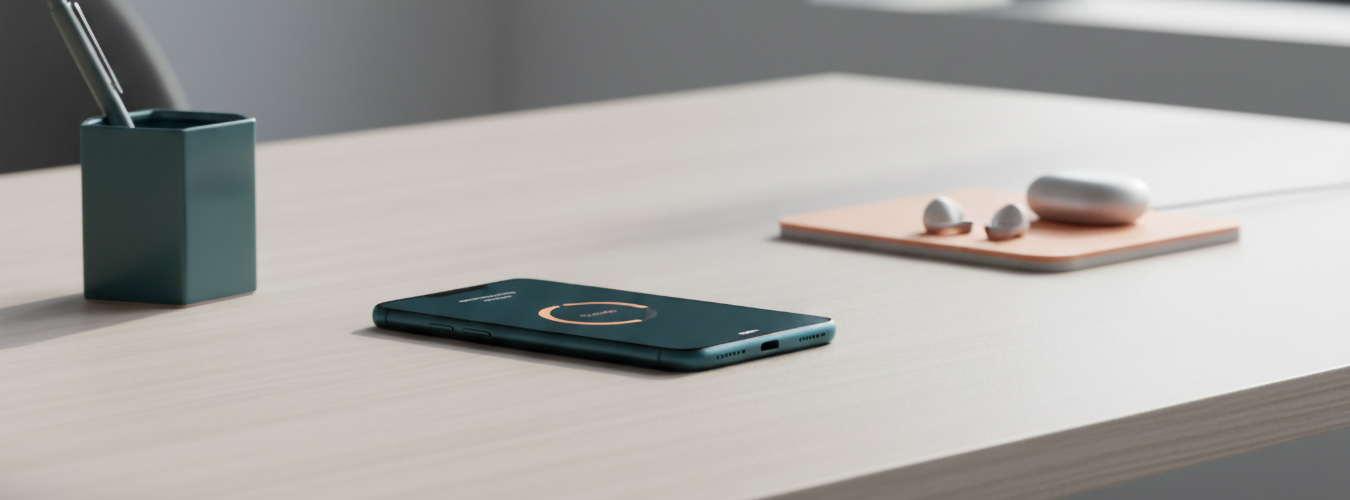
Consumer devices 101: features and use cases
Consumer smartphones and tablets—such as iPhones, Samsung Galaxy devices, or Google Pixels—are designed with mass-market users in mind. When adapted for business, they offer a modern, intuitive experience that can boost user satisfaction in the right settings.
Advantages of consumer devices include:
- Lower upfront cost: Attractive per-unit pricing, especially at scale.
- User familiarity: Reduced training time thanks to intuitive, widely adopted UIs.
- Rapid innovation: Access to the latest features, camera upgrades, and performance improvements with each generation.
- Ecosystem support: Wide range of apps and accessories (cases, docks, keyboards, etc.).
Potential drawbacks of consumer devices for enterprises include:
- Short lifecycle: Typically replaced every 18 to 24 months due to hardware failure or software end-of-life.
- Higher failure rate: Up to 20% annually in rugged environments like warehouses or vehicles.
- Limited durability: Even with cases, they’re prone to damage from drops, vibration, or exposure to the elements.
- Support inconsistency: OS updates may end within 2–3 years, creating security risks and software fragmentation.
Consumer devices are ideal for:
- Office-based staff or executives
- Retail environments with controlled conditions
- BYOD programs (with strict MDM policies)
- Short-term or seasonal deployments
When paired with MDM solutions, ruggedized cases, and employee training, consumer devices can work in enterprise, but they often require more frequent replacements and tighter IT oversight.
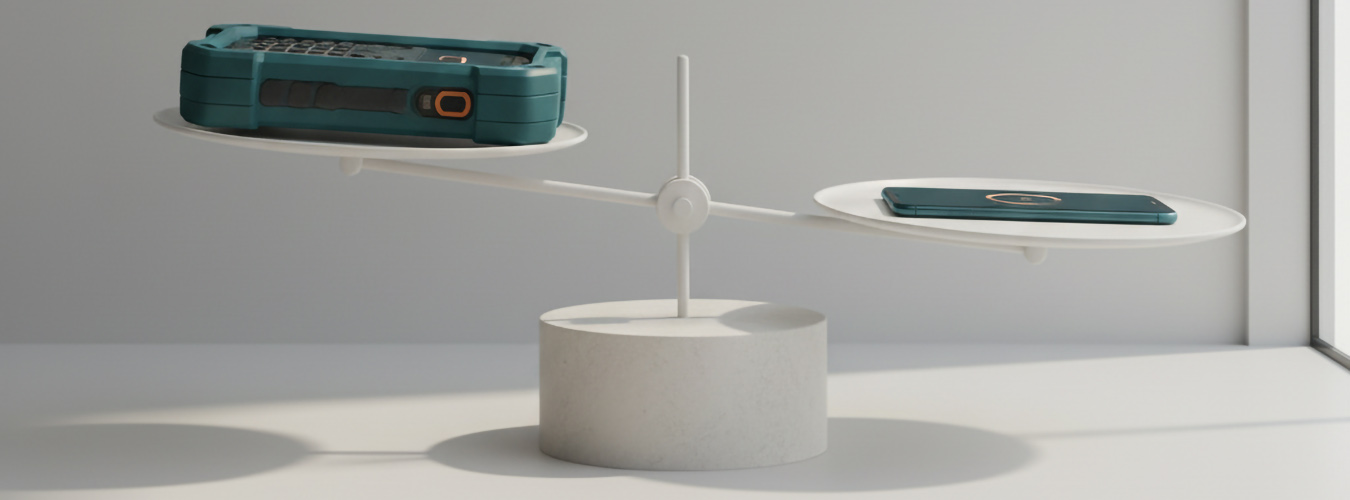
Comparing costs and TCO of rugged vs. Consumer devices
Let’s compare two typical device procurement paths over a four-year period. This is working with a hypothetical scenario of a single consumer device costing $700, and a rugged device costing $1,200 upfront.
|
Cost Category |
Consumer Device |
Rugged Device |
|
Device lifespan |
2 years (2 units/4 yrs) |
4+ years (1 unit) |
|
Replacement units |
$1,400 |
$1,200 |
|
Peripherals (cases, protectors) |
$100 per device × 2 = $200 |
Rugged casing built-in = $0 |
|
Failure rate / repairs |
15–20% annually (~$300) |
3–5% annually (~$100) |
|
IT support tickets |
$150 avg. per ticket (× 5) = $750 |
Fewer tickets (~$300) |
|
Downtime cost (lost productivity) |
$500–1,000 avg. per user |
Significantly reduced |
Over a four-year deployment, a rugged device could result in up to 20 to 30% lower total cost, despite a higher initial price.
Hidden costs to keep an eye on
Many organizations fall into the trap of judging mobile devices solely by their price tag. But beneath that attractive sticker price lies a host of hidden costs that can silently chip away at your bottom line—especially when using consumer devices in enterprise settings.
For starters, frequent device replacements are almost inevitable. Consumer smartphones typically need to be swapped out every 18 to 24 months, creating disruption for your frontline workers and unnecessary load on IT. When those devices fail or fall behind in performance, productivity takes a hit.
Then there’s the issue of accessory fatigue. Consumer phones often rely on third-party cases, screen protectors, and external mounts to survive day-to-day use in the field. These accessories wear out quickly—especially in harsher environments—adding recurring costs to your procurement cycle.
Let’s not forget about IT support. Devices not built for enterprise conditions tend to fail more often. That means more help desk tickets, more diagnostic time, and more strain on internal teams that could otherwise be focused on innovation—not break/fix support.
And finally, the most overlooked cost of all: lost productivity. When a mobile device fails, it can bring an entire shift to a standstill. In logistics, field service, or delivery scenarios, that downtime doesn’t just delay tasks—it disrupts entire operations.
All this to say: you need to think much deeper than the sticker price of a mobile device when selecting the right solutions for your company.
Here’s a checklist to help you evaluate the TCO of consumer vs. rugged devices.
How to evaluate mobile device TCO: A checklist
If you’re evaluating mobile devices for enterprise deployment, here are the key questions to ask before making a sourcing decision:
- What environment will the device operate in? Will it be exposed to weather, rough handling, or temperature extremes?
- How often—and by whom—will the device be used? Daily field use demands more durability than occasional office access.
- What apps or peripherals are required? Built-in barcode scanners, mounts, and custom interfaces can affect compatibility.
- What’s the expected replacement cycle? Can your devices last three to five years, or will you be buying twice as often?
- Does your team have the IT capacity for ongoing support? Frequent failures mean more help desk tickets and downtime.
- Are manufacturer warranties or repair programs in place? Accidental damage coverage can significantly reduce long-term costs.
- What’s the cost of downtime for your business? One broken device in the field can create ripple effects across operations.
When you look beyond the sticker price, it becomes clear: rugged devices are designed for longevity, predictability, and lower TCO. For most enterprise use cases—especially those with field-based or mission-critical teams—rugged isn’t just a better option. It’s the smarter investment.

Strategic sourcing best practices for device selection
Choosing the right mobile device for your workforce is a cross-functional process that should involve input from field operations, procurement, and support teams. Here’s how to build a sourcing plan that prioritizes long-term value and performance:
- Start with a requirements analysis. Involve real users from the start. Gather frontline feedback on:
- Scanner range and speed
- Camera resolution for inspections or documentation
- Battery life needed per shift
- Touchscreen usability with gloves
- Stay vendor neutral. Don’t lock yourself into a single brand too early. Compare devices from different manufacturers:
- Zebra vs. Samsung for rugged vs. semi-rugged use
- Honeywell vs. Apple for healthcare or retail settings
- Pilot before you commit. Run side-by-side field trials:
- Test one rugged device vs. one consumer model for 30 days
- Track performance, reliability, support needs, and user satisfaction
- Consider long-term support
- Look at Android/iOS update longevity
- Check for local repair services—especially important for Canadian regions
Strategic sourcing isn’t just about what works on paper. It’s about what works in the field, over time. Do your due diligence or hire a strategic sourcing partner who can handle this vetting process for you.
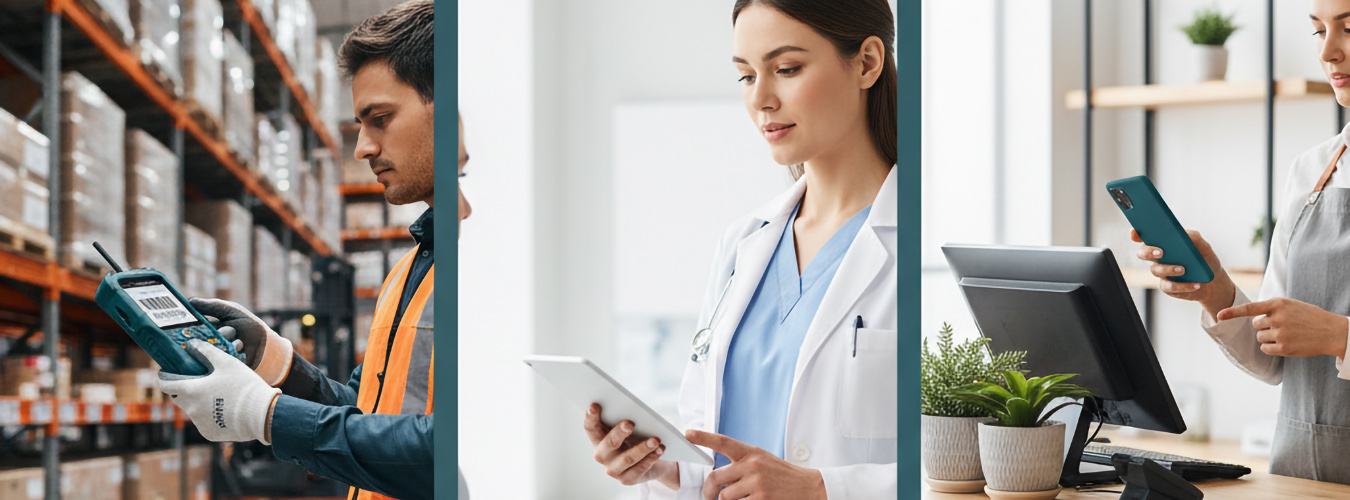
Choosing the right device based on your industry
While the rugged vs. consumer device debate is often framed as a simple binary choice, the reality is far more nuanced. Different industries face different operational pressures, and the ideal device strategy must reflect not only the work environment but also compliance needs, user expectations, and the cost of downtime.
In transportation and logistics, durability is essential. Devices are constantly being handled, dropped, mounted in vehicles, exposed to vibration, and sometimes used in extreme temperatures or cold storage environments. A consumer device, no matter how rugged the case, simply doesn’t hold up in this environment long term. That’s why rugged handhelds remain the standard.
Healthcare environments, however, introduce a different set of priorities. Devices are less likely to be dropped from trucks, but they must be cleaned frequently, used with gloves, and rely on high-resolution displays for reading EMRs and capturing diagnostic photos. Here, enterprise-grade consumer devices often win out, especially when paired with medical-grade cases and strict mobile device management (MDM) policies. Their lightweight form and high-resolution cameras support front-line caregivers, while features like touchless login and secure authentication reduce clinical friction.
Retail presents yet another scenario. It’s a fast-moving, cost-sensitive environment where devices must juggle inventory management, barcode scanning, and customer-facing tasks. Many retailers opt for standard smartphones paired with sleds that convert them into handheld scanners. Others invest in semi-rugged devices for stockroom staff while equipping salesfloor associates with lighter gear. Here, budget flexibility often determines the balance between reliability and replacement frequency.
The bottom line? No two sectors operate the same way. Strategic sourcing means understanding the specific constraints and workflows of your industry, and choosing devices that are purpose-fit, not just price-fit.

Implementation tips and decision framework
Choosing between rugged and consumer-grade mobile devices isn’t about checking a box—it’s about building a strategy that scales with your business, supports your users, and holds up under pressure. With dozens of factors at play, a clear decision framework can help guide your sourcing process and minimize regret later on.
- Start with the environment. Will the device live in a controlled office, a warehouse, or a snow-covered utility truck? Rugged devices shine in harsh, high-risk conditions—like oil fields, emergency response vehicles, or delivery fleets. They’re engineered to survive drops, dirt, water, and cold. If downtime in these environments is expensive or dangerous, rugged is a no-brainer.
- Then consider your lifecycle goals. How long do you expect the devices to last? Rugged units often remain viable for four to six years, with predictable support and fewer breakages. Consumer phones may need replacing every 18 to 24 months, which can create operational churn, but they offer flexibility and speed when budget or short-term deployment is the priority.
- Security and manageability also matter. Rugged devices often come enterprise-ready—with MDM compatibility, remote wipe, and built-in support for common field applications. Consumer devices can be hardened, but it takes extra work (and vigilance) to maintain compliance.
- User experience shouldn’t be overlooked, either. Field techs may need gloves-on touchscreens. Office users may prefer the familiar feel of an iPhone. If training time or user resistance is a risk, don’t underestimate the value of a familiar interface.
- Finally, consider whether a hybrid model makes sense. Many organizations successfully deploy rugged devices in warehouses or field operations, while giving managers and admin staff consumer devices for email and basic workflows. A hybrid strategy can offer the best of both worlds—but only if the sourcing, MDM, and support structure is centralized and coherent.
In the end, successful device sourcing isn’t about choosing a single “best” device—it’s about choosing the right device for each role, each task, and each user. It’s about strategic fit—not one-size-fits-all.

Not sure? Reach out to PiiComm to help with strategic sourcing
Choosing the right mobile device strategy isn’t about picking the cheapest option. It’s about aligning your technology to the realities of your operations. Strategic sourcing means selecting devices that match your environment, your workflows, and your long-term goals.
A smart procurement decision today can prevent costly downtime, excessive replacements, and support headaches down the road. Whether rugged, consumer, or a hybrid approach, every organization’s needs are different.
To make the best decision for your environment, consider engaging with a vendor-neutral mobility expert like PiiComm to evaluate your options and design a solution that delivers measurable ROI.
Reach out to the strategic sourcing experts at PiiComm today to learn more.


